Nature Notes
by Bob Thomas
When crude oil enters water, it immediately begins to spread out into an ever-thinning sheen, evaporate into the air, dissolve into the water and be attacked by microbes. Hydrocarbons that remain become denser and denser. A wide array of variables impacts this process, including wind, wave and current energy, density of the water, type of hydrocarbons in the crude (light crude as in the Macondo well gusher to heavy crude as in the Exxon Valdez spill), temperature and other meteorological considerations.
Tar balls are aggregates of the heavier ends of the crude oil spectrum and include asphaltenes, tar, paraffins, and the like. As the crude oil continues to break down (the lighter ends of the oil dissipate), the oil sinks lower in the water column, often rolling about on the sea floor. Tar balls incorporate all sorts of sands and other detritus. The key is that tar balls are semi-solid to solid, and look like black asphalt or tar.
Tar balls may originate from natural seeps on the floor of the Gulf or from leaks and spills of crude oil.
Another common source of tar balls is from ballast tanks in ships. Ballast tanks hold seawater and the amount can be regulated, depending on cargo loads and the associated buoyancy needed for the ship at the moment. If oil is present in seawater when a ship fills its ballast tanks, it will be sucked into the tanks. Such trapped oil exists in a caldron of bacterial activity and may constantly degrade. When ships flush their ballast into the sea, as they often do, the oil either exits as tar balls or continues to weather into tar balls.
Recall that soon after the BP Macondo well gusher was formed, reports of tar balls on Florida beaches were found to have originated from ship ballasts.
Tar balls harden from the outside in, so it is not uncommon to find tar balls that can be broken open to reveal liquid oils.
Louisiana’s marshes, beaches and coastal waters are being assaulted by another stage in crude oil aggregation best called oil patties, or just oil globs. They are not as dense as tar balls, and are brown instead of black. Oil patties look more like pudding, being dense but still obviously liquid. They may result from the continued degradation of the oily mousse that has been common along our shores in the form of orange streamers, or lines of emulsified oil on the surface.
Although we don’t like to see oil patties and tar balls washing into our coastal waters, the good news is that they are highly weathered, having lost many of their original hydrocarbon chemical qualities, and will continue to degrade in our ecosystem and gradually disappear.
The question is, at what cost? What impact do they and their remaining fractions have on the environment? Do they contain toxic remains of the widespread use of the dispersant Corexit?
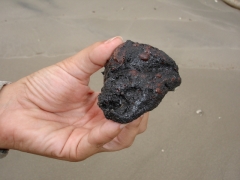
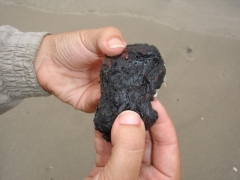
A tar ball from Elmer's Island near Grand The same tar ball being pulled apart by
Isle, La., found July 6, 2010. Leanne Sarco.
Photo by Bob Thomas. Photo by Bob Thomas.
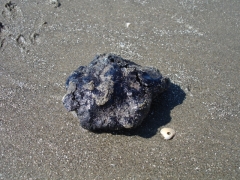
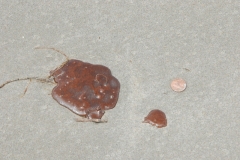
A tar ball found at Grand Isle State Park, Two oil patties found on Elmer's Island
Grand Isle, La., on July 6,2010. near Grand Isle, La., on July 6,2010.
Photo by Bob Thomas. Photo by Bob Thomas.
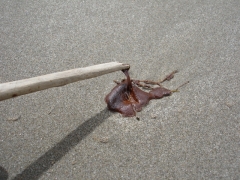
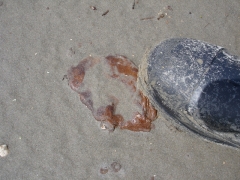
Another oil patty found on Elmer's Island Yet another oil patty found on Elmer's
on the same date. Island on the same date.
Photo by Bob Thomas. Photo by Bob Thomas.